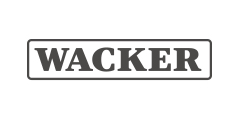SILRES ® HK 46 AND SILRES ® KX Methyl Silicone Resin Solutions for Heat-Resistant Anti-Corrosion Coatings
●Tack-free drying at room temperature
●Curing by baking
●High flexibility and hardness
●No or poor miscibility with other organic binders
●Formation of a very hydrophobic surface (contact angle of approx. 98° with water)
●High inorganic content
●Solids content: 50 ± 1%
■What Are the Differences between SILRES® HK 46 and SILRES® KX?
●Because of its low viscosity, pure SILRES® KX requires the addition of pigments and fillers to raise the viscosity and improve the coating’s flow properties when applied to metal surfaces. As such, we recommend adding HDK® H13L or HDK® N20 as a way of rendering the binder thixotropic. HDK® can also be used to improve the flow of SILRES® HK 46, even though the effect is significantly less pronounced. HDK® can be incorporated and dispersed using a bead mill with glass beads (typical laboratory disperser conditions: 30 min. at 5,000 rpm).
■At a Glance
●Coating properties on metal surfaces for formulations containing SILRES® HK 46 and KX:
▲Tack-free air drying, curing by baking
▲Excellent resistance to temperatures up to more than approx. 600 °C (1,110 °F)
▲Good corrosion protection, especially in combination with zinc-rich primers
|
SILRES ® HK 46 、 SILRES ® KX 、 SILRES® HK 46 、 SILRES® KX 、 HDK® H13L 、 HDK® N20 、 SILRES® HK |
|
|
[ Heat-Resistant Anti-Corrosion Coatings ][ mufflers ][ exhaust systems ][ engine components ][ boilers ][ furnaces ][ ovens inserts ][ oven inserts ][ chimneys ][ grills ][ electric heaters ][ gas heaters ][ incinerators ] |
|
|
Supplier and Product Introduction |
|
|
|
|
Please see the document for details |
|
|
|
|
|
|
|
|
|
|
|
English Chinese Chinese and English Japanese |
|
|
12.17 |
|
|
|
|
|
7031e |
|
|
321 KB |
- +1 Like
- Add to Favorites
Recommend
All reproduced articles on this site are for the purpose of conveying more information and clearly indicate the source. If media or individuals who do not want to be reproduced can contact us, which will be deleted.



























































































































































































































































































































































































































































































































































































































































































































































































































































































































